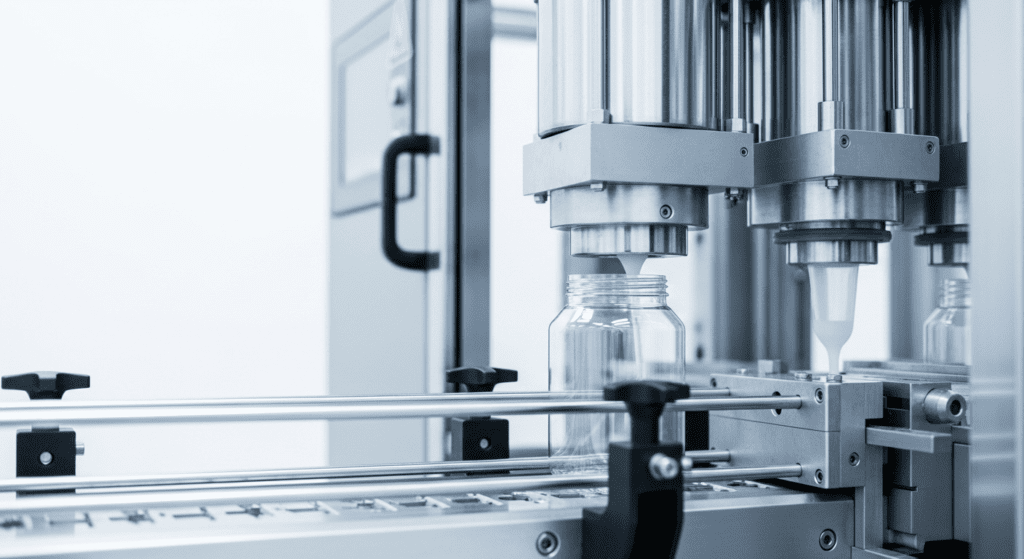The main difference between intermittent and continuous motion in packaging machines is that intermittent motion stops between each cycle to position and seal packages, while continuous motion moves products and materials constantly through the system. Continuous motion increases speed, while intermittent offers greater precision for complex tasks.

What Is Intermittent Motion
Intermittent motion packaging machines work in a start-stop pattern. The machine pauses during each packaging cycle to perform tasks like filling, sealing, or labeling.
Think of it like city driving. You stop at red lights, wait, then go again. The machine does the same thing – it moves the package to a spot, stops to do its job, then moves again.
These machines typically run between 8 and 70 packages per minute. Some can go up to 120 packages per minute for smaller items.
What Is Continuous Motion
Continuous motion packaging machines never stop moving during operation. The product flows through the machine in one smooth motion.
It’s like highway driving – constant speed with no stops. The sealing bars, fillers, and other parts move along with the product to do their jobs.
These machines can run much faster. They typically produce 100 to 400 packages per minute. Some can reach speeds of 180 packs per minute or more.
The Difference Between Intermittent and Continuous Motion
Now let’s explore the key differences between these two motion types.
Operation
Intermittent machines stop the conveyor belt at each station. The product sits still while the machine fills, seals, or labels it. Then it moves to the next station.
Continuous machines keep everything moving. The filling nozzles, sealing bars, and other tools travel alongside the product. They complete their tasks while matching the product’s speed.
Product Type
Intermittent machines handle solid products best. They work great for powders, granules, tablets, and items that need caps or special closures. The stop-start motion doesn’t affect these products.
Continuous machines excel with liquids. The smooth motion prevents waves or splashing inside packages. They can fill and seal liquid pouches 60% faster than intermittent machines.
Light products like paper sheets can shift in intermittent machines. Heavy items with small bases, like wine bottles, might tip over. These products need continuous motion.
Cost
Intermittent machines cost much less upfront. They’re simpler to build and maintain. This makes them perfect for small businesses or those just starting with automation.
Continuous machines require a bigger investment. The complex moving parts and advanced controls drive up the price. But they can save money over time through higher production speeds.
Speed
Intermittent machines typically run 8 to 25 packages per minute. Specialty models can reach 70 packages per minute. Very small items might go faster, but this causes more wear on the machine.
Continuous machines start at 100 packages per minute. Many run at 180 to 240 packages per minute. Some high-end models can reach 400 packages per minute.
Precision and Flexibility
Intermittent machines provide excellent precision. The start-stop motion allows exact control over filling amounts and seal placement. You can fine-tune each step easily.
They also offer more flexibility. You can handle different package sizes and types with simple adjustments. Adding special features like caps or labels is easier.
Continuous machines sacrifice some flexibility for speed. But modern models offer automatic changeovers that take just minutes. They maintain good precision even at high speeds.
Product Handling
Intermittent machines can be rough on delicate items. The constant starting and stopping creates forces that might damage products. Light items might shift, causing bad seals or wasted film.
Continuous machines treat products gently. The smooth motion keeps everything stable. This reduces damage and improves package appearance.
For fragile items or products that might spill, continuous motion is usually better.
Equipment Complexity and Size
Intermittent machines use simpler mechanics. They have fewer moving parts and basic controls. This makes them easier to fix and maintain.
Continuous machines need complex systems. The traveling seal bars and synchronized movements require advanced controls. They often need more floor space too.
Throughput
Intermittent machines work well for small to medium production runs. They’re perfect when you need 10,000 to 50,000 packages per day.
Continuous machines shine in high-volume operations. They can produce hundreds of thousands of packages daily. The constant motion means less downtime too.
Making the Right Choice
Choosing between intermittent and continuous motion depends on your specific needs.
Consider your products first. Liquids and delicate items often need continuous motion. Solid products and those needing special caps work fine with intermittent motion.
Think about your production volume. Low to medium volumes suit intermittent machines. High-volume operations benefit from continuous motion.
Don’t forget your budget. Intermittent machines cost less upfront but might limit growth. Continuous machines cost more but offer better long-term value for busy operations.



